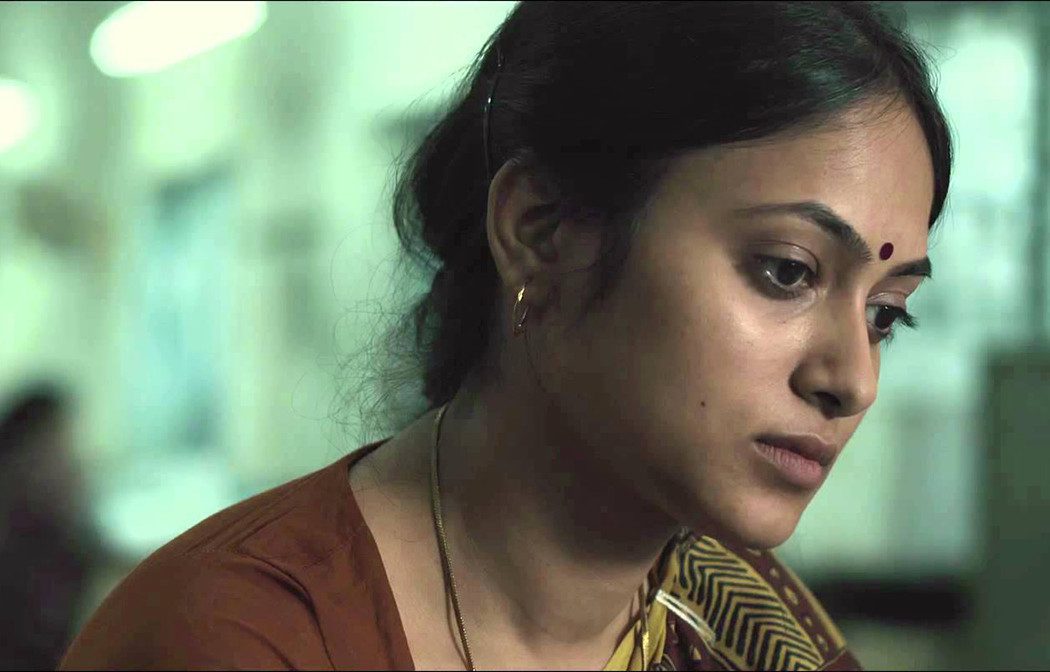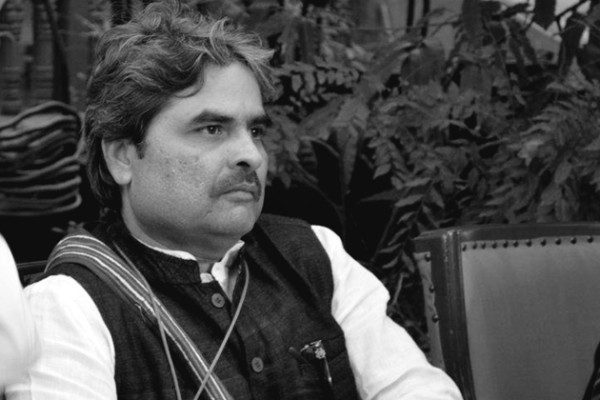‘Asha Jaoar Majhe’ isn't a film about two individuals so much as it is one about life itself, says Aditya Nag.
Aditya Vikram Sengupta’s Asha Jaoar Majhe is an inexplicable film. While it lacks any dialogue (save for the slogans from a political rally, which arches over the desolate spirit of the film), it is not in the mould of conventional silent films. It is embedded in modern-day realism that the high-definition cameras seem to revel in, cutting visual cues in and out with an accuracy that only the twinning of such cameras to the peaks and troughs of a Burrabazar neighbourhood can afford.
The movie is an insider’s view into the life of a cohabiting (married?) couple in lower middle-class, old-world Calcutta, which, in the eyes of a normal cinema, could be considered decayed. To its credit, a cellphone creeps into the film only to provide narrative support, with each member of the couple shown cheekily unbothered to receive the other’s call.
The film clearly to revive a certain world in the eyes of a public that has been fast forwarded. There is an unforgettable melody of a scene in which the husband is leaving the house for his night shift, prepping it for the wife to come back, and the ceremony with which the camera parades the images in front of the music is almost festive! That scene stands out in particular because it’s one of two segments of shooting at night, which is when a silent film becomes all the more memorable.
The impatient public cuts the perfect caricature in the cinema hall, and the lip-smackers huff up a knowing laugh or two as though they are watching a pastiche from their own homes.
The first segment is composed of his leaving for work, bicycling away, when we are introduced to the first signs of a modern city. The dreary second segment is just his night shift at a printing press, scary for its thumping noises and drab blue and grey colours. Back home, the wife arrives for the night, and is sweaty and listless for a nap. She organises the kitchen, fetches the fish that her husband has bought. She must cook. Unsurprisingly, the theatre is every now and then filled with a sigh or a gasp or a smacked lip, each of which seems to add to the strange, unideological allure that the film speaks to us in, with its careful and expert montages of slobbery fish, different kinds of fine grain, or long shots of lilting heads.
The impatient public cuts the perfect caricature in the cinema hall, and the lip-smackers huff up a knowing laugh or two as though they are watching a pastiche from their own homes. Of course, one needs to ask whether there is a larger message than all the neatly arranged images. One doesn’t need to dig much to realise that the characters are unorthodox, the precision is high, the devotion to detail is unique.
After its quaint efforts, which span 80 minutes, the film culminates in a dream, bringing us there almost in order to tell us that the preceding moments were its causes. While all its time is spent in silence, the dream appears to us as a glue to all the gaps in their day: what they were waiting for but did not know about. Dreariness, of chucked sleep patterns and the knowledge of missed moments—life seeming to miss a point—keeps the movie ticking. Almost any cuts seem to string together beautifully, the lighting springing out of the screen before the subject matter.
Dreariness, of chucked sleep patterns and the knowledge of missed moments—life seeming to miss a point—keeps the movie ticking.
Essentially, this is not a movie about two human beings so much as it is one about life—the life that they happen to lead, which they seem to be stuck in. (The lack of dialogue alerts us to the silence of our own daily grinds.) In any case, the film is devoid of any internal meaning until the final scene arrives, rather abruptly. It happens when the wife is about to leave for work and the husband on the threshold of their swinging doors, after another night at the factory. The camera freezes on his face the moment he walks in, and we get more of a leap than a cut, to his woman’s face, which is frozen in a shot even more monumentally (at great depth and focus), almost signalling to us that she is more important in some way!
After the camera has dwelt on her face for a substantially more number of seconds than her husbands, the frame leaps to a smoky forest, in which we immediately see tall trees and a high, dense fog. As our gaze falls, the bed on the slope tells us that the scene has modulated the bedroom into a dreamland; the smoky haven in which the two can finally meet (their purpose) and stop time—stop their daily grind—before they must get on with life again. The movie does not show us two individuals who are visibly very happy. However, they have learned to live, they have learned what they must do. But we don’t know how much they have ever learned about each other. Since the movie spans only a single day in true time, we are made to rest assured that the close of that day’s cycle brought some magic into each lover’s eyes (even though the camera will never show them looking at each other, in a single frame, outside the willowy dream). That’s one to shatter the norms.


